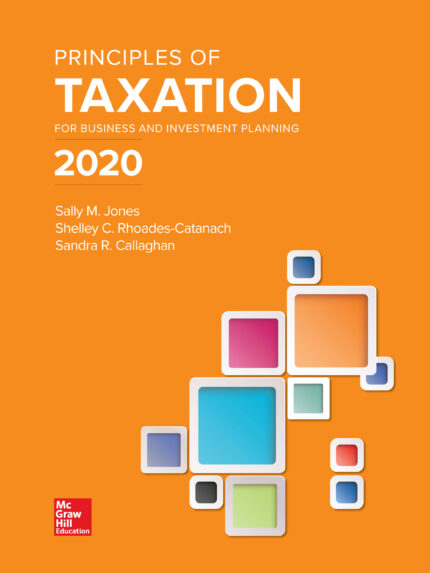South Western Federal Taxation 2014 Comprehensive 37th Edition By William H. Hoffman – Test Bank
COMPREHENSIVE VOLUME–CHAPTER 4–GROSS INCOME: CONCEPTS AND INCLUSIONS
Student: ___________________________________________________________________________
1. The realization requirement gives an incentive to own assets that have increased in value and to sell assets whose value has decreased.
True False
2. A sole proprietorship purchased an asset for $1,000 in 2013 and its value was $1,500 at the end of 2013. In 2014, the sole proprietorship sold the asset for $1,400. The sole proprietorship realized a taxable gain of $400 in 2014 but an economic loss of $100 in 2014.
True False
3. Judy is a cash-based attorney. In 2013, she performed services in connection with the formation of a corporation and received stock with a value of $4,000 for her services. By the end of the year, the value of the stock had decreased to $2,000. She continued to hold the stock. Judy must recognize $4,000 of gross income from the stock for 2013.
True False
4. Barney painted his house which saved him $3,000. According to the realization requirement, Barney must recognize $3,000 of income.
True False
5. Nicholas owned stock that decreased in value by $20,000 during the year, but he did not sell the stock. He earned $45,000 salary but received only $34,000 because $11,000 in taxes were withheld. Nicholas saved $10,000 of his salary and used the remainder for personal living expenses. Nicholas’s economic income for the year exceeded his gross income for tax purposes.
True False
6. The fact that the accounting method the taxpayer uses to measure income is consistent with GAAP does not assure that the method will be acceptable for tax purposes.
True False
7. The financial accounting principle of conservatism is not well-suited to the task of measuring taxable income.
True False
8. A cash-based taxpayer purchased a certificate of deposit for $1,000 on July 1, 2013, that will pay $1,100 upon its maturity on June 30, 2015. The taxpayer must recognize a portion of the income in 2013.
True False
9. Ralph purchased his first Series EE bond during the year. He paid $709 for a 10-year bond with a $1,000 maturity value. The yield to maturity on the bonds was 3.5%. Ralph is not required to recognize the $291 ($1,000 – $709) original issue discount until the bond matures. However, Ralph can elect to amortize the discount over the ten years.
True False
10. At the beginning of 2013, Mary purchased a 3-year certificate of deposit (CD) for $8,760. The maturity value of the certificate was $10,000 and it was to yield 4.5%. She also purchased a Series EE bond for $6,400 with a maturity value in 10 years of $10,000. Mary must recognize $1,240 of income from the certificate of deposit in 2013, and $3,600 from the Series EE bonds in 2022.
True False
11. In 2005, Terry purchased land for $150,000. In 2013, Terry received $10,000 from a local cable television company in exchange for Terry allowing the company to run an underground cable across Terry’s property. Terry is not required to recognize income from receiving the $10,000 because it was a return on his capital invested in the land.
True False
12. In December 2013, Mary collected the December 2013 and January 2014 rent from a tenant. Mary is a cash-based taxpayer. The amount collected in December 2013 for the 2014 rent should be included in her 2014 gross income.
True False














Reviews
There are no reviews yet.